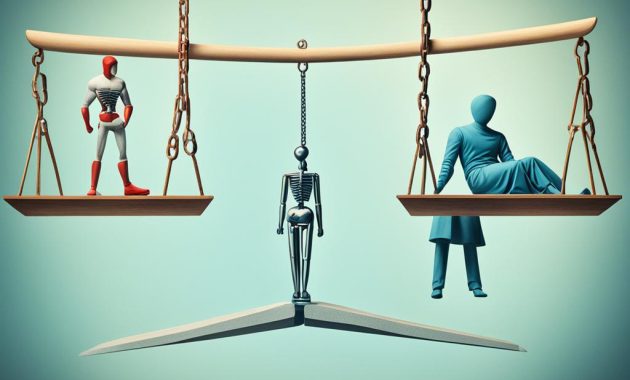When someone gets hurt because someone else was careless or did something risky, figuring out who’s at fault is key. This part of the law, known as personal injury liability, decides who should pay for the harm done. It involves looking at things like if the person could have been more careful, whether both sides were somewhat at fault, and even laws about where the accident happened or what product caused the harm. All these parts make the legal side of personal injury quite detailed and full of angles to consider.

In personal injury disputes, the idea of negligence is very important. The injured party must show that the other party had a duty to be careful, didn’t meet that duty, and because of that, the injured party was harmed. Sometimes, both the injured person and the other one might share the blame. Liability could also be decided by special laws, like those covering accidents on someone’s property or a faulty product.
Deciding who’s at fault in personal injury cases needs a careful look at the evidence. This includes what experts have to say. How the case goes from filing to the end, whether it settles or goes to court, is crucial for deciding who should pay for the harm. Figuring out how much the person should be paid, including for medical costs and other harm, is also a big part of working this out.
There are many things that can affect who’s to blame, like who needs to prove what in court, laws about sharing the blame, and how much time has passed since the accident. Lawyers who specialize in personal injury are really important. They help their clients understand and get through all the tricky parts. They make sure the injured person gets treated fairly.
Key Takeaways
- Determining liability in personal injury cases is crucial for deciding who pays for the harm.
- The main issue in these claims is negligence, with certain points needing to be proved by the injured party.
- But, laws about where and how injuries happen or what product caused them can also come into play.
- Having strong evidence and expert opinions is key in these cases, as it helps set fault and damages.
- Specialized personal injury lawyers are essential for understanding and dealing with the many complexities involved.
Understanding Personal Injury Liability
In personal injury cases, negligence is key. The plaintiff must show the defendant had a duty of care and breached that duty, leading to damages. Duty of care means acting with reasonable caution. Breach of duty happens when the defendant acts in a way a normal person wouldn’t.
The plaintiff must have real damages. These damages must link directly to the defendant’s actions. The “but for” test asks if the plaintiff would be injured without the defendant’s negligence.

The Role of Negligence
Negligence is the core of personal injury law. To win, the plaintiff needs to show four things: duty of care, breach of duty, damages, and causation.
Duty of Care
Duty of care means acting with real caution. What counts as ‘cautious’ changes with each situation. For example, more caution is needed when kids or dangerous tools are involved.
Breach of Duty
If the defendant doesn’t act as they should, it’s a breach of duty. This failure can cause harm.
Damages
To ask for compensation, the plaintiff must have real losses from the defendant’s actions. These losses can be physical, to property, or financial. They must be clear and connected to the defendant’s actions.
Causation
The plaintiff must prove the defendant’s actions directly caused their injuries. The “but for” test looks at whether the harm would have happened without the defendant’s negligence.
Contributory Negligence
When it comes to personal injury, figuring out who’s at fault isn’t always clear. The idea of contributory negligence means both the person hurt and the one who might have caused it could be partly to blame. In cases where the hurt person also made mistakes, their injury compensation might be lessened to match the fault they share. This is the rule of comparative negligence.
In North Carolina, how fault is handled is quite different from most other states. They stick to a contributory negligence rule. If the injured person is even a little at fault, they can’t get any money at all. This is unlike the fairer way other states do it. There, the amount of money you get lessens as much as you were at fault.
This strict rule can make it hard for people to win their personal injury cases in North Carolina. Insurance companies and lawyers usually like it. It makes it easy for them to say it’s not their fault. Even if someone is badly hurt, they might not get any money if they’re found to have made even a small mistake.
But, in North Carolina, there are exceptions to this harsh rule. If a case shows gross negligence, willful or wanton misconduct, or if there’s evidence supporting the “last clear chance” idea, there might be hope. People should know that just because of this rule, they shouldn’t give up on a personal injury case. They might actually be owed a lot of money if someone else was really at fault.
Contributory Negligence Comparative Negligence Plaintiffs are barred from recovery if they contribute to the accident or injury in any way. Damages obtained by plaintiffs are reduced according to their percentage of fault. Used in a few states, including North Carolina. Used in most states. Favored by insurance companies and defense attorneys as it allows them to easily dispute liability. Considered more equitable as it allows plaintiffs to recover some compensation even if they were partially at fault. Can bar individuals from recovering damages for minor errors, even in severe accident cases. Allows for a more nuanced and fair assessment of liability and damages.
In North Carolina, winning a personal injury case means showing really bad behavior or a last chance thing. People shouldn’t be too discouraged by the tough contributory negligence rule. They might still win a lot of money if someone else was mostly to blame for the accident.

Statutory Liability
In personal injury cases, sometimes the law decides who is liable. The Occupiers’ liability legislation says property owners should keep their premises safe. If they fail, like not leashing a dog by the rules, it can show they were negligent.
Occupiers’ Liability Legislation
The law makes property owners ensure their place is safe for visitors. They must fix any dangers and warn people about them. Failing to do so means they could be held liable if someone gets hurt.
Bylaws and Regulations
Violating local bylaws or regulations can also lead to trouble. For instance, a company not using needed safety gear might be seen as negligent if an employee gets hurt. These statutory obligations aim to keep us safe and are key in deciding fault.
Product Liability
Product liability means holding companies accountable for injuries caused by their products. This can include makers, sellers, and distributors. In the U.S., there are three kinds of claims: design flaws, mistakes in making, and not warning about dangers.
Design Defects
Design fault cases focus on the problem with the product’s original design. Plaintiffs have to show this design was unsafe for its main use. They must also prove a safer design could have avoided the harm.
Manufacturing Defects
Manufacturing defects happen when a product’s creation is flawed. This means the product is no longer as designed, becoming dangerous. Plaintiffs need to show the flaw came from the maker, leading to their injury.
Failure to Warn
Failure to warn claims are about not properly warning users of product risks. Plaintiffs must show how this lack of warning made the product more dangerous. They also need to prove a clear warning would have prevented the harm.
Proving product liability can be hard, needing experts to show the defect hurt the plaintiff. Despite the difficulty, it’s vital for those injured by unsafe products. It helps them get fair compensation and calls out those at fault.
Defenses in Personal Injury Cases
In personal injury cases, the defendant may use several legal defenses. They do this to try to weaken the plaintiff’s case, making it hard to show neglect or limiting their own liability. Among the common defenses are the limitation period defense, the voluntary assumption of risk defense, and statutory defenses.
Limitation Period Defense
This defense argues that the plaintiff filed too late, missing the window set by the law. If victims don’t file within the law’s time, they could lose their right to compensation. A defendant might say the claim is time-barred, leading to case dismissal.
Voluntary Assumption of Risk
This defense says the plaintiff knew the risks and agreed to them, which resulted in their injury. It argues the defendant didn’t need to be careful since the plaintiff chose to take the chance. If it’s shown the plaintiff knew and accepted these risks, the defendant might not be held responsible.
Statutory Defenses
Municipalities and law enforcement can benefit from special defenses under the law. These often protect them from certain personal injury claims. Dealing with these defenses can get pretty tricky and might need a lawyer who knows this area well.
Figuring out who’s responsible in personal injury cases means looking closely at both sides. Skilled lawyers are key in examining each case’s unique details and crafting strong responses to these defenses.
Evidence and Expert Witnesses
In personal injury cases, plaintiffs must show proof at trial. This proof includes witness accounts and documents. Expert witness testimony is key, too. These experts have special skills and knowledge. They help the court understand complex matters.
Medical Experts
Doctors and other health professionals are vital in injury cases. They provide crucial details about the plaintiff’s injuries. They connect these injuries to the accident. Plus, they offer insights on recovery and future medical needs. Their word supports the plaintiff’s case, showing how the injury affects their life.
Liability Experts
Liability experts also have a role in these cases. They include accident re-constructionists, engineers, and other specialists. These experts look at the facts and give their professional view on what happened in the accident. They help pinpoint fault. Their work is essential in proving the defendant’s responsibility and the plaintiff’s claim for damages.
Personal Injury Liability
Finding who’s at fault in personal injury cases is often tricky. There are different ways like negligence or product liability to decide. This process involves looking at the law, past cases, and what experts say. They help figure out who should pay for the harm done and how much.
Legal protection from personal liability can be really cheap. For under $10 a year, you can get coverage for every $100,000 in personal liability. A policy of $1 million often only costs about $100 a year. This kind of policy can protect you from big bills if you’re found at fault in an accident.
Having personal injury insurance for cases like libel can be a smart move too. Getting a $1 million policy might cost around $10 more a year. This amount is not far off from lower coverage. Most insurance companies don’t even offer less than $100,000 coverage anymore because it’s just not enough. They’re worried about the high costs and risks involved.
For about $10 more a year, you can have peace of mind with $1 million coverage. This goes hand in hand with personal liability insurance. Together, these policies shield you from high claims. They can save your wallet and help you avoid losing valuable assets in case of a mishap.
Coverage Type Annual Cost Coverage Limit Personal Liability $100 $1 million Personal Injury $10 $1 million
For folks wanting more than $1 million in protection, there’s umbrella insurance. It can add $15 to $20 yearly to your costs. Though it might bump up what you pay monthly or yearly, it’s a great way to save money if an accident happens at your place.
In Maryland, the law limits noneconomic damages to $860,000. This goes up if more than one person dies on a property to $1,290,500. While personal injury insurance isn’t very common in Maryland, it’s great for dealing with emotional or mental harm from accidents on your property.
The Litigation Process
Once a personal injury lawsuit starts, the plaintiff tells the defendant. The defendant must then reply. Both sides share important papers and facts in a process called discovery. Plaintiffs might also have to go to doctors for extra exams so experts from both sides can share their thoughts.
Filing the Lawsuit
The process begins when the lawsuit is filed, with the defendant replying. This could be an answer or a request to drop the case, showing the legal battle ahead. Getting good legal help is key during these early stages.
Discovery and Examinations
The discovery phase is where each side learns more about the other’s case. They do this by asking questions and getting information from each other and witnesses. This is to make sure the facts are clear for both sides. Taking statements, or depositions, from witnesses is crucial. These statements, given under oath, offer deep insights and impact settlement negotiations.
In difficult cases, experts might be called in. For example, doctors might look at injuries or accident scenes. Their insights are crucial in complex personal injury lawsuits.
Settlement vs. Trial
Settlement talks happen at many points before trial. This is to try and solve the issue without court. Often, it shows the goal is to find solutions everyone can agree on before the final trial. If these talks fail, the case will go to court, where complexity can add to the time needed to resolve it.
Even though lawsuits can seem confrontational, most are settled before trial. Ninety-six percent of personal injury cases are dealt with before a court date. This fact highlights the value of expert lawyers in getting a fair deal for their clients.
Calculating Damages
Once fault is decided in a personal injury case, the plaintiff must show their damage’s worth. This includes special damages, medical special damages, and general damages.
Special Damages
Special damages are the costs directly tied to the plaintiff. These might include repair or replacement of items, lost wages, and out-of-pocket injury-related expenses.
Medical Special Damages
These cover all medical treatments’ costs. This includes hospital stays, surgeries, rehab, and ongoing care. Even if insurance covers some, these costs are key in compensation.
General Damages
The aim of general damages is to pay for unseen harm. This includes physical pain, mental anguish, and reduction in life’s quality. A multiplier, between 1.5 and 5, is often used with medical special damages to decide this amount.
Multiplier Method
Insurance companies and lawyers often use the multiplier method for general damages. A multiplier over 5 might be needed for severe cases. However, a judge or jury will make the final choice. They consider the impact of the accidents and the quality of testimonies.
Factors Influencing Liability Determination
There are many important factors that decide who’s at fault in personal injury cases. Knowing these can help those hurt use the law better and get the money they need.
Burden of Proof
The proof needed in personal injury cases is less than in crimes. Plaintiffs just need to show their story is more likely true. They don’t have to prove the other party’s wrongdoing beyond a doubt. This makes it a bit easier if they have good evidence.
Comparative Negligence
Comparative negligence is crucial in figuring out injury liability. In some places like Florida, plaintiffs can get money even if they were partly at fault, as long as they were less than half responsible. This is fairer and more balanced when assigning blame and damages.
Time Limitations
There’s also a deadline to file personal injury claims. These time limits mean a plaintiff must sue within a set time after the accident. Missing this deadline means losing the chance to get money, no matter how valid the claim. So, knowing and following these deadlines is vital.
Liability Determination Factor Description Burden of Proof The amount of evidence a plaintiff needs to prove fault in personal injury cases is less than in criminal cases. Comparative Negligence This principle lets plaintiffs get some money even if they were partly to blame, with the money they get depending on their fault. Time Limitations These are time periods a plaintiff has to file an injury claim, if they want to be able to get money for their case.
The burden of proof, comparative negligence, and time limits are all key in injury cases. Knowing these factors is crucial for anyone wanting to recover losses fairly.
The Role of Personal Injury Attorneys
Personal injury attorneys are key in sorting out who’s at fault and getting fair payment for those hurt. They work on proving the other party’s fault, showing the harm caused, and reaching a fair deal or going to court for their client.
These attorneys have the skills and tools to deeply look into the accident, gather strong proof, and fight hard for their client. They know a lot about accident claims and how to work out the worth of injuries. This lets them get the most they can for their clients.
Whether it’s a car crash, a fall, or a problem with a product, having a skilled personal injury attorney on your side is crucial. They help in getting the right law representation and the payment you deserve when you’re hurt.
Conclusion
Determining who’s at fault in personal injury cases is complex. It involves legal rules, gathering proof, and valuing damages. Negligence, contributory negligence, statutory liability, and product liability all play roles in deciding who’s legally accountable for the injury. Expert opinions, the legal process, and understanding different types of damages are key in proving fault and getting fair pay for the hurt party.
Personal injury lawyers are essential in helping clients through this difficult process. They fight for the rights of their clients, be it in a car crash, a faulty product case, or a slip-and-fall incident. These attorneys have the skills and means to deeply explore the accident, collect needed evidence, and handle settlements or fight in court.
The aim of these injury cases is to make sure the harmed party gets fair compensation. This can cover economic losses, like medical expenses and missed work, or non-economic costs, like pain. With knowledge of the law and the help of skilled professionals, plaintiffs can move through the legal process. They can work towards getting the fairness and compensation they’re entitled to.
FAQ
What is the importance of determining liability in personal injury cases?
Determining liability is key in personal injury cases. It decides who’s at fault for the plaintiff’s injuries. This decision is vital for knowing who must compensate the injured person.
What are the key elements of negligence in personal injury cases?
The core of injury cases is negligence. Plaintiffs must show four key points: duty of care, duty violation, damages, and causation. They need to prove the defendant had a care duty, broke it, and this cause the injury.
How does contributory negligence impact liability determination?
If both plaintiff and defendant share blame, it affects who’s liable. The plaintiff’s own carelessness can lower their compensation. This is known as comparative negligence.
How can statutory liability impact personal injury cases?
Statutes can define liability, like laws on property owners’ duties or product safety. These laws make sure property owners and product makers are accountable for harm caused to others.
What defenses can defendants use in personal injury cases?
Defendants have various defenses, like time limits or risky behavior acceptance. They might say the plaintiff did not prove negligence. Or that the injury was partly the plaintiff’s fault.
How are expert witnesses used in establishing liability?
Expert witnesses provide insight on complex matters. They can be doctors or liability specialists. Their professional opinions are often critical in proving liability.
What is the typical litigation process in personal injury cases?
The lawsuit, discovery, and then either settlement or trial make up the typical process. Parties share documents and go through questioning. Most cases settle without going to trial.
How are damages calculated in personal injury cases?
Damages are figured out in special, medical, and general categories. They can cover repair costs, lost wages, medical bills, and pain or suffering. The total compensation is usually based on the medical expenses, multiplied by a set factor.
What factors influence the determination of liability in personal injury cases?
Several factors like proof needs, negligence laws, and time limits affect who’s to blame. They help courts decide if someone is legally liable for another’s injuries.
What is the role of personal injury attorneys in liability determination?
Personal injury lawyers are crucial for sorting through liability issues. They navigate legal complexities to ensure the injured party gets fair compensation. Their work involves proving the other party’s fault, the link between actions and harm, and the extent of the damages.



